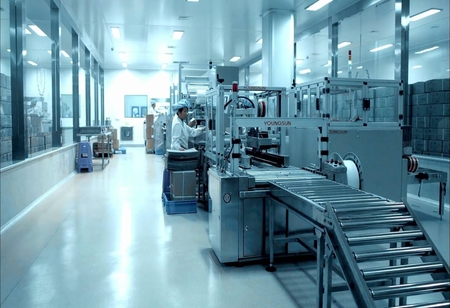Technology has been slowly creeping to the core of the Pharma Industry and is likely to bring the needed transformations that will help the industry to evolve further. Indian Pharma Industry has been seeing a positive growth as we are heading towards the other half of 2020.
With the global pandemic swinging its sword, improving accessibility, increasing spending, and growing exports have been significantly aiding the Indian Pharma Industry’s growth bandwagon. While according to the rating agency ICRA, the growth trajectory for the Indian pharmaceutical industry is likely to remain at 10-13 percent in 2020-21 despite challenges. As stated by IBEF, the Indian pharmaceutical sector is expected to grow to US$ 100 billion, and the medical device market expected to grow US$ 25 billion by 2025.
According to IPA Secretary General Sudarshan Jain, “The Indian Pharmaceutical industry is a sunrise industry with a competitive advantage for India. We should leverage India’s position by unleashing entrepreneurial spirit through policy stability and ecosystem.” “A shift towards patient-centric quality care, enhanced use of technology in delivering care, and higher share of India in medical tourism are some of the dominant trends which the Indian healthcare sector is going to witness in 2020,” he added.
The two–day conference that was hosted in the month of March (5-6) this year came out with the discussion on industry issues which concerns regulatory practices that restricts import/export between countries. Also, sessions were hosted to promote quality medical devices and pharmaceuticals that are affordable across healthcare around the world.
And while speaking of the technologies, here are some of the technology trends which will redefine the future of Indian Pharma Industry:
Cloud
Pharmaceutical companies have been reaping the capabilities of cloud technology to increase operational efficiency and deliver business and scientific insights across R&D, manufacturing, and commercial operations. It also increases the pace of possible innovation by consolidating and standardizing data, thus considerably reducing complexities and inefficiencies.
Artificial Intelligence
AI technology is being used to analyze and garner precise insights from the data, accelerate R&D, optimize clinical trials, hence providing patients with expected outcomes. Furthermore, AI can recommend the next best actions, predict patient adherence, suggest methods for required intervention, automate workflows, and deliver personalized engagements, among others.
Dawn of Body Sensors
This next-generation technology will be a vital device in the coming future. The sensors can be placed inside a body or on the body so as to analyze various critical organs. As digestible sensor has already had a successful use case where this sensor is placed inside a pill to track not only the drug that is being digested, but, also checks how the body is absorbing the pill. This has been very successful and important in tracking schizophrenia’s prescription adherence, depressive disorders that are critical, and also bipolar disorder.
IoT
IoT has been also gaining quite the importance in the pharma industry with the advancements in its capabilities which provide pharmaceuticals companies with numerous new opportunities from preventive maintenance of equipment, control of drug manufacturing, to improved
supply chain management. To say it precisely, IoT trackers and sensors enable the needed condition to handle chemicals and biomaterials thus securing and ensuring flawless operation.
AR and VR
Another next-gen technology that is likely to storm the pharma industry is AR and VR technology. As this technology is gaining traction across many segments, some pharmaceutical companies are also expected to allow patients to better connect with their prescriptions by transforming the descriptions on the bottle into 3D. This will help patients to better connect and follow their prescriptions as they don’t have to worry about going through all the instructions that are related to prescriptions.
3D-Printing
As we saw the very first pharma related 3D-Printing five years ago (2015), its manufacturing has gained quite the hype and is expected to completely transform how the pharma industry operates when it concerns its supply-chain. It is expected that pharmacies and hospitals in ten years' time would print the pills that need in-house. This would also be very favorable for those B2B companies that are involved in sales operations and marketing of pharmaceuticals.
 Magazine
Magazine
